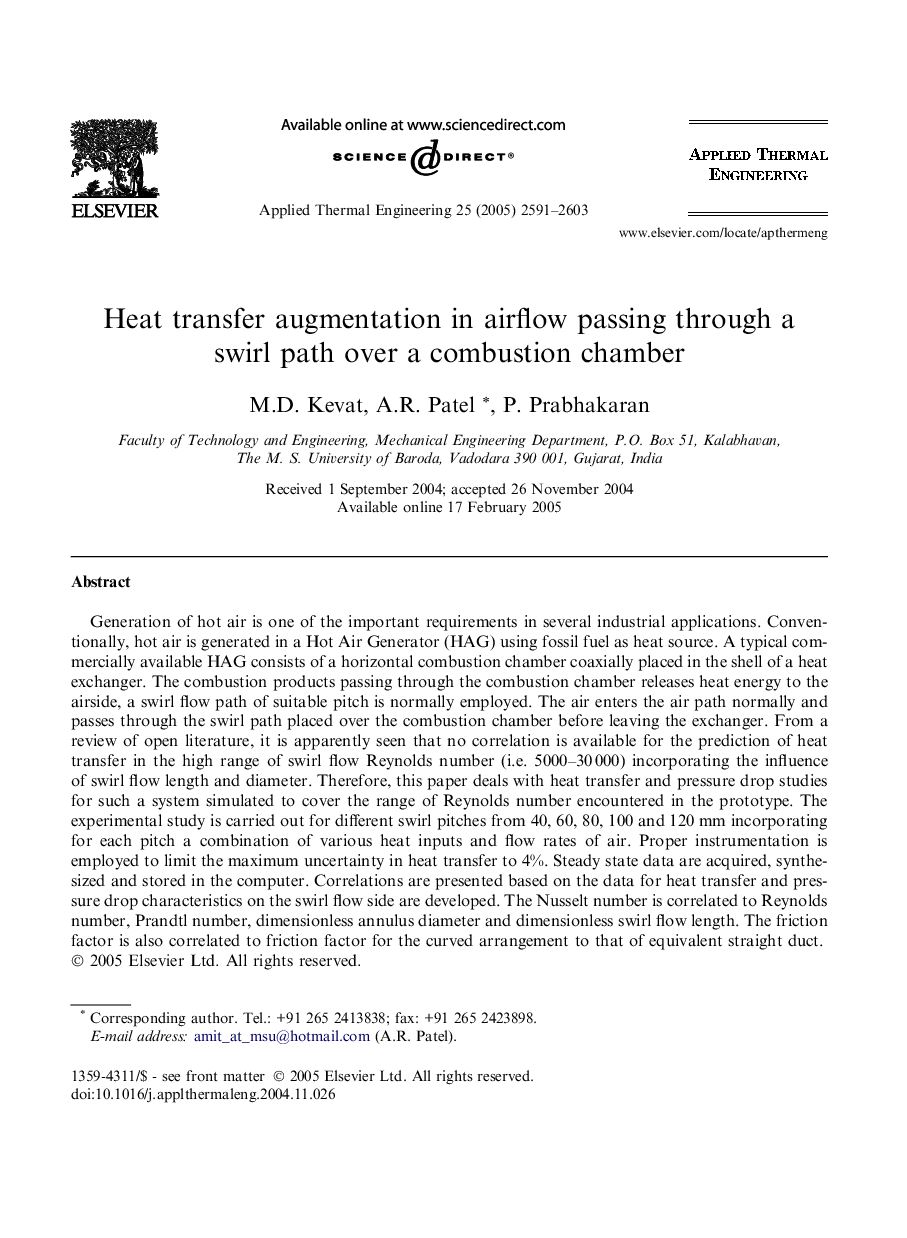| Article ID | Journal | Published Year | Pages | File Type |
|---|---|---|---|---|
| 649483 | Applied Thermal Engineering | 2005 | 13 Pages |
Generation of hot air is one of the important requirements in several industrial applications. Conventionally, hot air is generated in a Hot Air Generator (HAG) using fossil fuel as heat source. A typical commercially available HAG consists of a horizontal combustion chamber coaxially placed in the shell of a heat exchanger. The combustion products passing through the combustion chamber releases heat energy to the airside, a swirl flow path of suitable pitch is normally employed. The air enters the air path normally and passes through the swirl path placed over the combustion chamber before leaving the exchanger. From a review of open literature, it is apparently seen that no correlation is available for the prediction of heat transfer in the high range of swirl flow Reynolds number (i.e. 5000–30 000) incorporating the influence of swirl flow length and diameter. Therefore, this paper deals with heat transfer and pressure drop studies for such a system simulated to cover the range of Reynolds number encountered in the prototype. The experimental study is carried out for different swirl pitches from 40, 60, 80, 100 and 120 mm incorporating for each pitch a combination of various heat inputs and flow rates of air. Proper instrumentation is employed to limit the maximum uncertainty in heat transfer to 4%. Steady state data are acquired, synthesized and stored in the computer. Correlations are presented based on the data for heat transfer and pressure drop characteristics on the swirl flow side are developed. The Nusselt number is correlated to Reynolds number, Prandtl number, dimensionless annulus diameter and dimensionless swirl flow length. The friction factor is also correlated to friction factor for the curved arrangement to that of equivalent straight duct.
